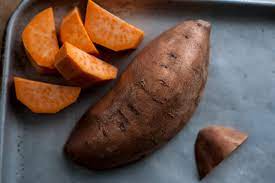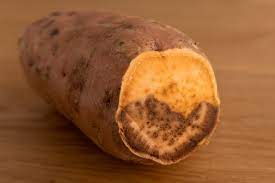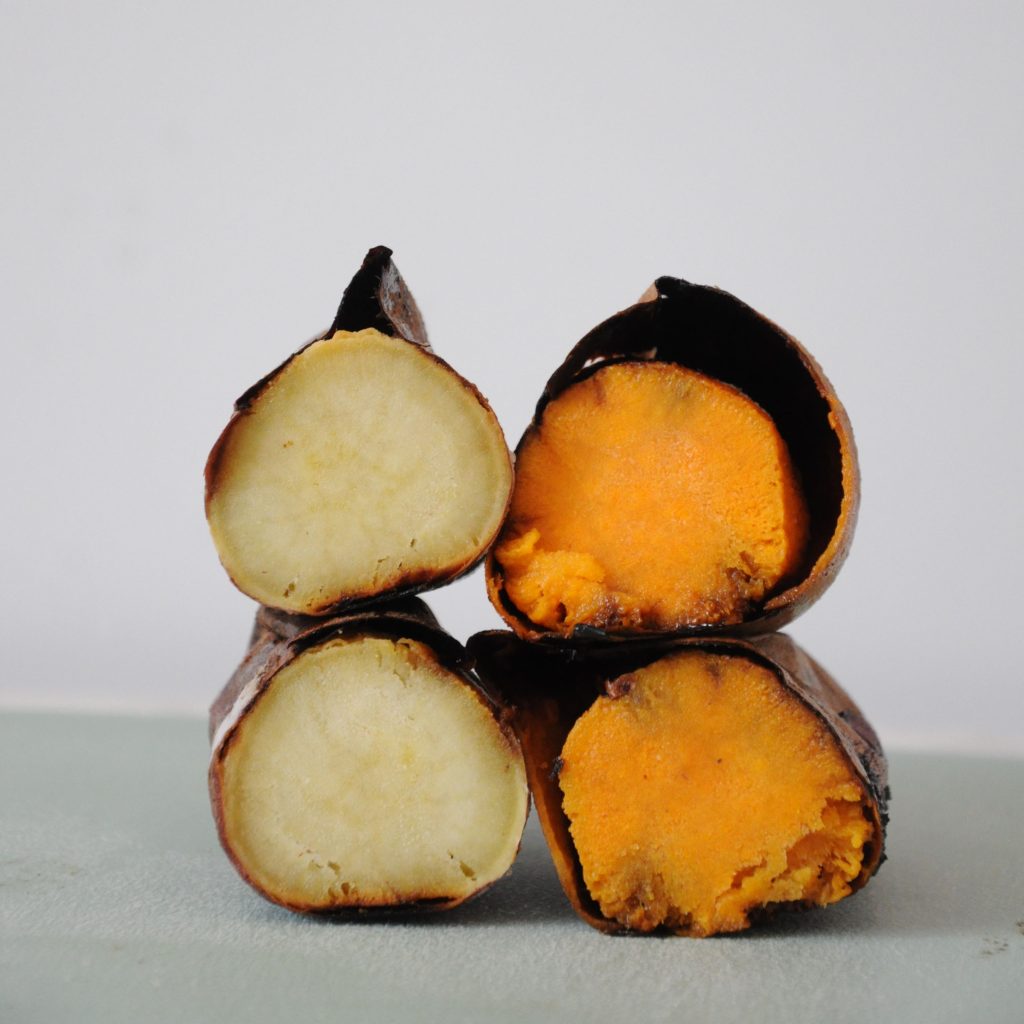

Sweet potatoes are a staple in many households, providing a rich source of vitamins, minerals, and fiber. But when stored for an extended period, sweet potatoes can go bad, making them unsafe to eat. To ensure you are consuming only the freshest and healthiest sweet potatoes, it’s important to know how to tell if they have gone bad and understand proper storage of sweet potatoes.
In this ultimate guide for 2023, we will provide you with all the information you need to identify whether your sweet potatoes are still good or if it’s time to toss them out. From physical signs to changes in taste, we’ll cover all the aspects of sweet potatoes that can indicate spoilage. We’ll also provide tips on how to store sweet potatoes properly to extend their shelf life and keep them from going bad.
By the end of this comprehensive guide, you will have a better understanding of sweet potatoes, how to tell if they have gone bad, and how to store them properly.
Whether you’re a seasoned cook or a beginner in the kitchen, this guide will provide you with all the knowledge you need to ensure that your sweet potatoes are fresh and safe to eat. So, let’s dive in and discover the ultimate guide on how to tell if sweet potatoes are bad in 2023!
Physical signs of bad sweet potatoes

The appearance of mold is a clear indicator that your sweet potatoes have gone bad. Mold can appear as white, green, or black spots on the skin of the sweet potato. If you see mold growing on your sweet potatoes, it’s time to dispose of them.
Shriveling or drying of the skin is another physical sign that your sweet potatoes have gone bad. As sweet potatoes age, their skin can lose moisture, causing them to dry out and wrinkle. If the skin of your sweet potatoes is dry and shriveled, it’s a sign that they are no longer fresh.
Softness or mushiness can also indicate that your sweet potatoes have gone bad. As sweet potatoes age, they can lose their firmness and become soft and mushy. If you notice that your sweet potatoes are soft or mushy, it’s a sign that they are no longer fresh and you should dispose of them.
Finally, changes in color can also indicate that sweet potatoes have gone bad. If your sweet potatoes have darkened in color or have become discolored, it’s a sign that they have been stored for too long and are no longer fresh.
Changes in taste and smell

In addition to physical signs of spoilage, changes in taste and smell can also be indicators that sweet potatoes have gone bad. When sweet potatoes start to spoil, they can develop a bitter or sour taste, which is an indication that they are no longer good to eat.
The smell of spoiled sweet potatoes is also a good indicator that they have gone bad. A sweet potato that has gone bad will have a musty, sour, or rancid odor, which is a sign that the sweet potato has started to decompose.
The smell of a spoiled sweet potato is usually noticeable even before the taste. o if you notice an unusual or off smell, it’s best to dispose of the sweet potato.
If you are unsure whether a sweet potato is still good to eat, it’s best to cut off a small piece and taste it. If the sweet potato tastes bitter or sour, or if the smell is off, it’s best to dispose of it.
It’s important to note that sweet potatoes can also develop changes in taste and smell if you don’t store them properly. Improper storage, such as storing sweet potatoes in a warm or moist environment, can cause them to spoil more quickly and develop changes in taste and smell.
Proper Storage of Sweet Potatoes

Proper storage is key to extending the shelf life of sweet potatoes and keeping them from going bad. By following proper storage techniques, you can ensure that your sweet potatoes remain fresh and tasty for as long as possible.
The ideal temperature for storing sweet potatoes is 45-50°F, with a relative humidity of 50-70%. This cool and dark environment will help prevent spoilage and extend the shelf life of the sweet potatoes.
It’s important to note that you shouldn’t store sweet potatoes in the refrigerator. The cool and moist environment of the refrigerator can cause them to spoil more quickly.
Another important factor to consider when storing sweet potatoes is the proximity to ethylene-producing fruits, such as apples and bananas. Ethylene is a naturally occurring gas that can cause sweet potatoes to ripen more quickly and go bad more rapidly.
It’s best to store sweet potatoes away from ethylene-producing fruits to prevent spoilage. It’s also important to regularly inspect your sweet potatoes for signs of spoilage. If you notice any physical signs of spoilage, such as mold growth, shriveling, softness, or changes in color, it’s best to dispose of the affected sweet potatoes.
By regularly inspecting your sweet potatoes and following proper storage techniques, you can ensure that you are only consuming the freshest and healthiest sweet potatoes.
Ways to store sweet potatoes

In a Cool, Dark Place: Store sweet potatoes in a cool, dark place, such as a pantry or root cellar. The ideal temperature range is 45-50°F, with a relative humidity of 50-70%. By storing sweet potatoes in a cool, dark place, you can prevent spoilage and extend their shelf life.
In Plastic Bags: Packaging sweet potatoes in plastic bags can help prevent moisture buildup, which can cause spoilage. Make sure to punch holes in the bags to allow for proper ventilation.
In a Root Vegetable Storage Bin: A root vegetable storage bin is a container designed specifically for storing root vegetables, such as sweet potatoes. Cedar or other natural materials construct this bin and it offers a cool and dark environment ideal for preserving sweet potatoes.
Away from Ethylene-Producing Fruits: Sweet potatoes should be stored away from ethylene-producing fruits, such as apples and bananas. Ethylene is a naturally occurring gas that can cause sweet potatoes to ripen more quickly and go bad more rapidly.
In a Paper Bag: Storing sweet potatoes in a paper bag can help absorb excess moisture and prevent spoilage. Just make sure to change the paper every few days to keep the environment fresh.
Frequently Asked Questions
A sweet potato should have an orange-colored flesh inside, although some varieties may range from white to purple. The texture should be firm yet tender and the skin should be smooth and free of blemishes or bruises.
When cooked, the flesh of a sweet potato should be soft and fluffy with a slightly sweet taste. If the sweet potato has any discoloration or is too soft or mushy, it is likely past its prime and not suitable for consumption.
Sweet potato rot is a type of fungal disease caused by the fungus Phytophthora. It can affect the roots, stems, and tubers of sweet potato plants. Symptoms of sweet potato rot include dark brown spots on the surface of the tuber and a foul odor coming from the infected area.
The infected areas may become soft and mushy as they rot away. In severe cases, entire sweet potatoes may become rotten and inedible. Sweet potato rot is most common in wet soil conditions, so it is important to ensure that your sweet potatoes are planted in well-draining soil and watered only when necessary.
It is generally safe to eat sweet potatoes that have sprouted, but there are a few things to consider. First, the taste of the sweet potato may be slightly altered. The sprouts contain enzymes that can affect the flavor and texture of the potato. Second, if you plan on eating a sweet potato that has sprouted, it should be cooked thoroughly as this will help kill any bacteria or toxins that may have developed from the sprouting process.
Finally, if your sweet potato has started to rot or develop mold, it should not be eaten as this can cause food poisoning.
Overall, eating sweet potatoes that have sprouted is generally safe if they are cooked properly and do not show signs of rotting or mold. However, it is important to note that the taste of the potato may be slightly different due to the enzymes in the sprouts. It is best to use caution when eating any type of vegetable that has begun to grow new parts.
Sweet potatoes can be perfectly safe to eat even if they have white inside. The white color is actually a sign that the sweet potato is beginning to spoil, so it’s best to consume them before this happens. If the white area is still small and localized, you can cut it out and discard it before cooking.
However, if the entire sweet potato has turned white, then it’s best to throw it away as it may be spoiled or rotten.
When selecting sweet potatoes at the store, look for ones that are firm and free of bruises or blemishes. Avoid buying any with soft spots or areas of discoloration, as these could indicate that they’re past their prime.
It’s also important to store them in a cool, dark place until you’re ready to use them. This will help keep them fresh for longer and reduce the risk of spoilage.
Yams and sweet potatoes are both root vegetables, but they are two distinct species. Yams (Dioscorea spp.) are native to Africa and Asia, while sweet potatoes (Ipomoea batatas) originated in Central America.
Yams have a rough, scaly skin and come in a variety of shapes and sizes. The flesh is typically white or yellowish, but can also be purple or pink. Yams have a higher starch content than sweet potatoes, making them drier and less sweet when cooked.
Sweet potatoes have a smoother skin and come in shades of orange, yellow, white or purple. The flesh is usually soft and sweet when cooked. Sweet potatoes are higher in sugar content than yams, making them sweeter when cooked. They also contain more vitamins and minerals than yams.
Sweet potatoes contain a variety of bacteria, including lactic acid bacteria, which are responsible for the fermentation process that gives sweet potatoes their unique flavor. Additionally, sweet potatoes can contain a range of other bacteria, such as Bacillus subtilis and Enterobacter cloacae.
These bacteria are typically found in soil and water sources where sweet potatoes are grown. While these bacteria may not be beneficial to humans in large quantities, they can help to break down organic matter and improve the fertility of the soil in which sweet potatoes are grown.
The black spots on sweet potatoes are a sign of decay, caused by fungi that have invaded the potato. These spots can appear anywhere on the potato’s surface and will often be accompanied by a soft, mushy texture. If you find black spots on your sweet potato, it is best to discard it as it can be unsafe to eat.
To prevent sweet potatoes from developing black spots, it is important to store them properly. Sweet potatoes should be kept in a cool, dark place with good air circulation and away from sources of moisture. It is also important to inspect them regularly for any signs of decay or damage. If you notice any discoloration or softness, discard the potato immediately.
In addition to proper storage techniques, choosing quality sweet potatoes is also essential for avoiding spoilage. Look for firm potatoes with smooth skin and no obvious damage or bruises.
The ideal firmness for sweet potatoes depends on the intended use. If you plan to bake them, then a firmer sweet potato is better. This will ensure that it retains its shape and doesn’t become mushy during baking. On the other hand, if you plan to mash or puree the sweet potatoes, then a softer one is better. The softer texture will make it easier to mash or puree and result in a smoother consistency.
When selecting sweet potatoes from the store, look for ones that are free from bruises or blemishes and have smooth skin. If you press into them lightly with your finger, they should feel firm but not rock hard. Avoid any that are soft or spongy as this could indicate they are rotting inside.
You can also read this article How to preserve pumpkins to last Longer | Simple guide.
In conclusion, knowing how to tell if sweet potatoes are bad is an important aspect of food safety and proper storage. By understanding the physical and sensory signs of spoilage, you can ensure that you are only consuming fresh and healthy sweet potatoes.
Proper storage, including keeping sweet potatoes in a cool and dark place, packaging them in plastic bags or a root vegetable storage bin, and storing them away from ethylene-producing fruits, is key to extending their shelf life. By following these tips, you can enjoy the delicious and nutritious taste of sweet potatoes for months to come.

Leave a Reply
You must be logged in to post a comment.